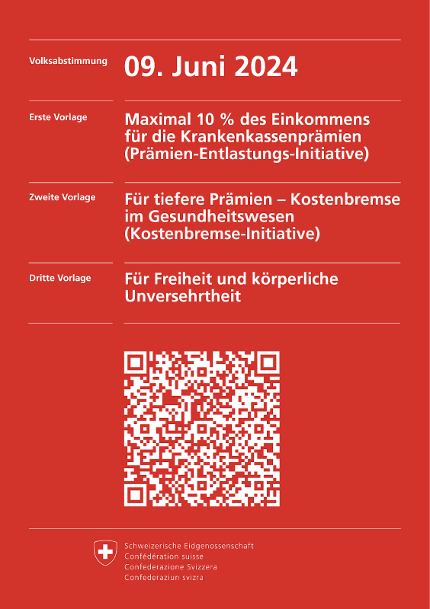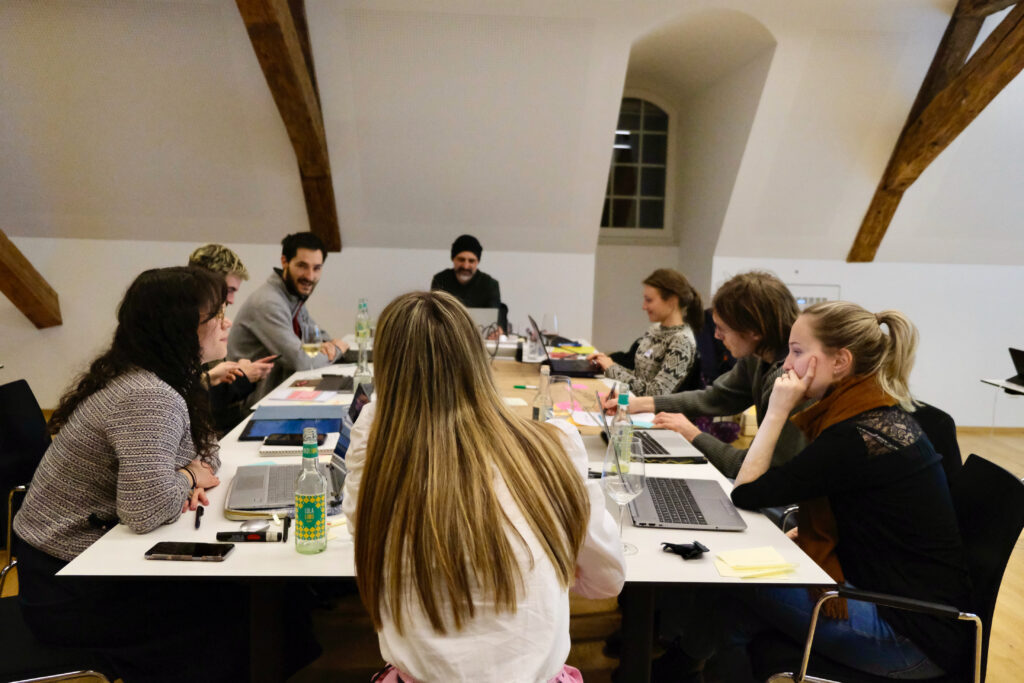This is the first of two blog posts created with masters students of Swiss Universities of Applied Sciences from a variety of academic fields receiving the Hirschmann foundation scholarship. The goal for the young group of future decision-makers was to develop creative solutions and innovative outputs on how to tackle the challenges facing direct democracy today.
Authors: Téa Bilat, Katja Mutter, Klara Rüttimann, Donia Sbika, Lisa Schelbert, Vera Sieber, Alina Thoma, Lotte Verhagen, Levin Willi
Politics can be complicated – participating in votes on complex issues, such as social security reforms, energy subsidies, or military strategies, requires citizens to be well-informed and act thoughtfully. The complexity of some voting proposals therefore leads many in Switzerland to abstain from voting, especially young people. Decision-makers and public stakeholders thus need to prioritize accessibility and education as essential strategies to enhance voter engagement in direct democracy and empower citizens to shape the nation’s future.
Switzerland is known for its unique way of doing politics – our direct democracy allows us to vote up to four times a year, making the Swiss system one of the most distinctive direct democracies in the world. This form of governance empowers every citizen over the age of 18 to actively participate in important local, cantonal and federal decisions, boosting transparency and collaboration between the government and the people. Direct democracy as a form of government offers valuable benefits, but, as with everything, there are challenges.
The Issue of Low Young Voter Turnout: What’s Behind it?
With voter turnout, averaging at 42.5 % in 2023, the question arises as to why more people aren’t participating in votes. Reasons such as “I don’t understand what the vote is about” or “my vote alone won’t affect the outcome” are frequently cited among those who choose not to vote. This trend is particularly prominent among young adults, an essential group within the voting population, given that they will bear the consequences of today’s decision the longest.
Research indicates that when individuals lack understanding of the issues at hand, they tend to either abstain from voting or reject proposals. Young adults aged 18 to 25 exhibit a somewhat selective voting behavior, as they primarily participate in elections that are less complex and directly relevant to them. So how can we tackle this problem and motivate also younger citizens to participate more often?
Empowering Swiss Democracy: Innovative Solutions to Boost Voter Engagement
A major first hurdle for young adults in the voting process is often the convoluted and technical language used in official voting booklets. Promoting simple language and incorporating visual elements, such as images and visualizations for data, can aid understanding by providing intuitive insights into complex issues. One promising approach is also the use of multimedia resources, such as short explanatory videos, to simplify complex topics. The easyvote website, for instance, offers animated video clips illustrating the pros and cons of various proposals and thereby helping voters make informed choices aligned with their values and interests.
Some recent research shows that the integration of digital technologies into information materials has the potential to significantly enhance public participation in democratic processes. There is, in consequence, potential in promoting the visibility and availability of visual content such as multimedia resources within the Swiss population. Some digital information portals, social media awareness campaigns, and voting apps exist already, but potential users still need to be made more aware about this offer and seek it out actively.

The inclusion of Quick Response codes (QR-codes) in official voting booklets provided by the Federal Chancellery (see figure) would enable voters to easily and conveniently access information videos relevant to the respective vote. Voters can get an overview over the most important arguments for both camps either by reading the pre-existing text, or now also by watching short information clips. Placing QR-codes prominently on election booklets with clear instructions can increase the likelihood of voters scanning the QR codes with their smartphones, allowing them to interact with the reliable information instantly.
In the implementation of this idea, challenges such as the spread of misinformation, lack of cybersecurity, or the reinforcement of presupposed narratives due to digital echo chambers still need to be addressed. Involving experts from relevant industries or academia in the creation of such materials can help render digital resources on votes more trustworthy and evidence-based.
In conclusion, a functional direct democracy relies on the active participation of its population, even more so in a rapidly changing world. We suggest that in order to enhance voter engagement of young adults in Switzerland’s direct democracy, innovative approaches that prioritize accessibility and objectiveness of information as well as political education are required. Combining the written, more technical text in official voting brochures with a QR-code on the cover, which gives easy access to understandable, informative and neutral videos on the respective topics presents an innovative first step trying to enhance voter turnout of the young generation.




